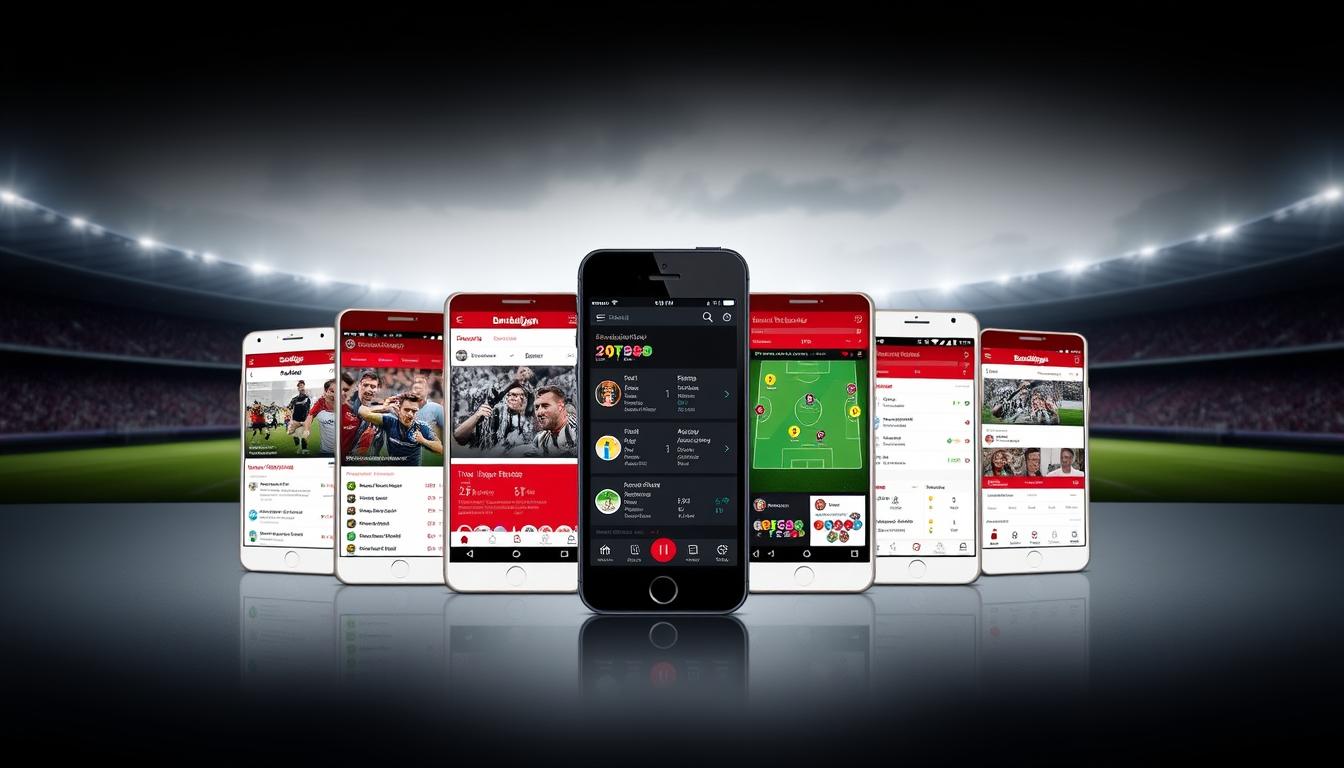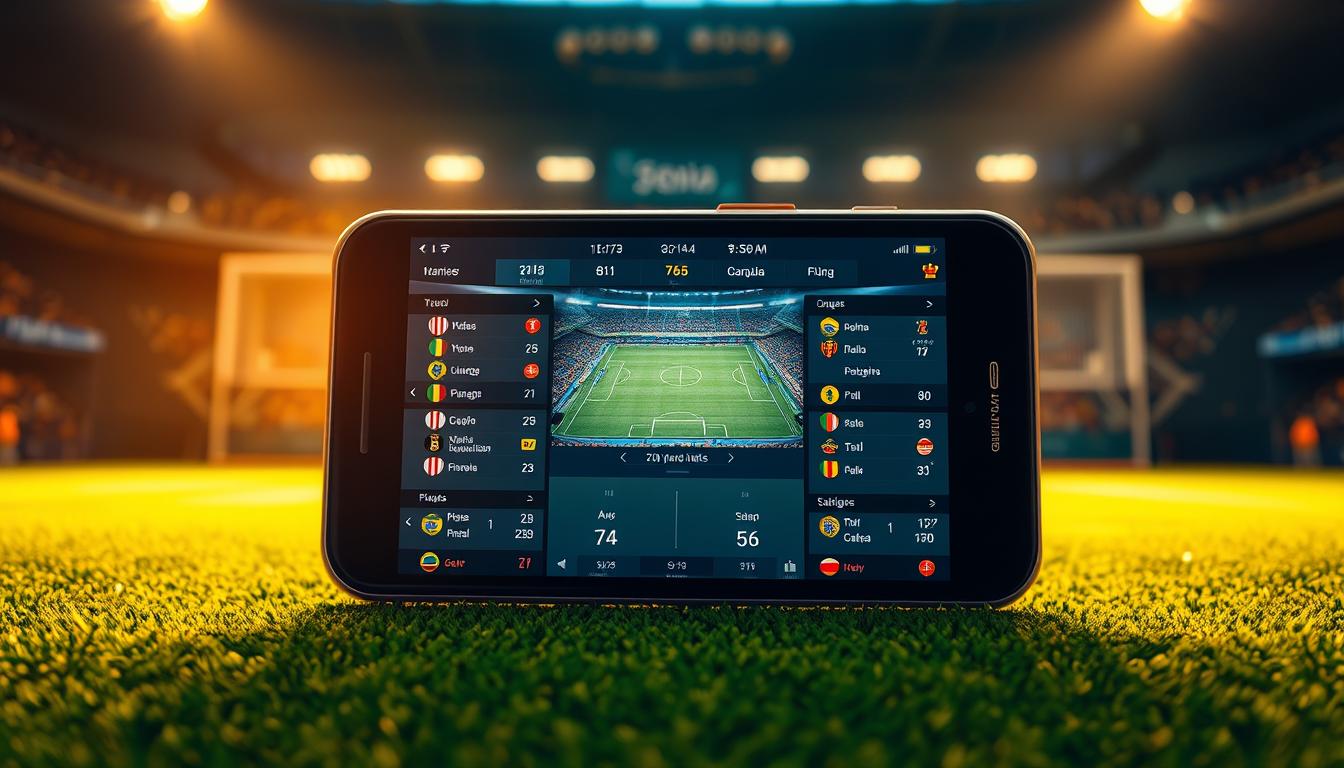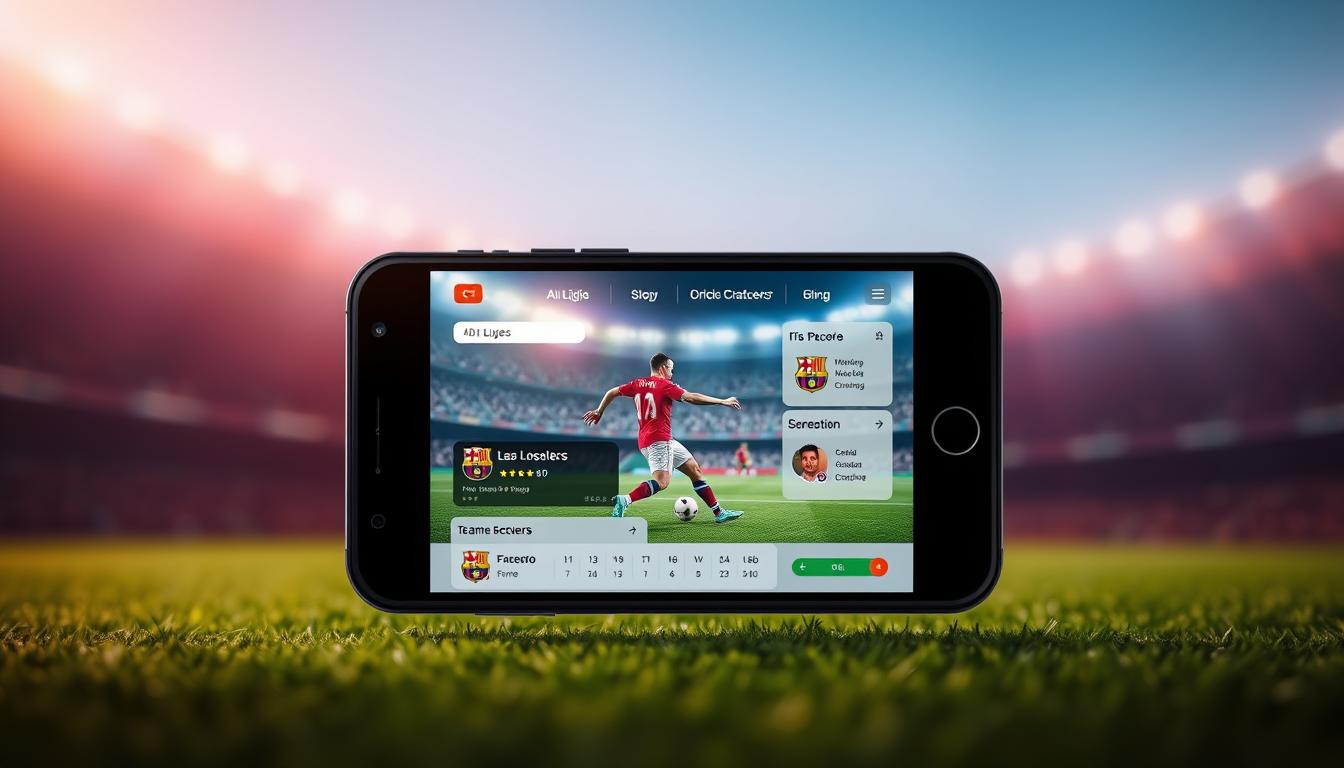Anúncios
Can you really enjoy a high-quality gaming experience on a low-resolution phone? Many gamers face this question today. The need for advanced graphics and performance keeps growing. Luckily, emulators are changing the game, offering solutions for those with limited devices.
We will look into how Android emulators boost gaming on low-end devices. This makes what was once impossible, possible.
Understanding the Importance of Emulators for Gaming
Emulators are key for gamers wanting to play their favorite Android games on better hardware. They let users run Android games on PCs, boosting the gaming experience. This means better graphics and faster gameplay, making games look and feel great.
Anúncios
Using Android emulators greatly improves game performance. Many games struggle on lower-end devices. But emulators help, letting users play more games than before.
Also, emulators open up gaming to more people. Those with less powerful phones can now play popular games. This makes the gaming community bigger and more active.
What Are Android Emulators and How Do They Work?
Android emulators are key tools in today’s tech world. They let users run Android apps on PCs and Macs. They create a virtual space that mimics an Android device’s setup, making apps work like they’re on a real Android device.
Anúncios
This virtual setup is crucial for app performance. It helps match the app’s needs with the host system’s abilities. This is great for gamers who want to play Android games on bigger screens.
Also, emulators solve compatibility issues, making things easier for users. They come with special features for different needs. This is good for both casual users and developers testing apps in various settings.
| Feature | Description |
|---|---|
| Virtualization | Simulates Android OS to run apps on non-Android devices. |
| Compatibility | Translates the App Binary Interface for seamless app functionality. |
| User Experience | Provides a platform for playing games and using apps in a desktop environment. |
| Customization | Offers various settings to enhance performance and usability. |
The Need for Better Gaming Performance on Low-Resolution Phones
Many gamers on low-resolution phones struggle with lag, crashes, and slow responses. These problems make gaming less fun and sometimes frustrating. People look for ways to make games run smoother, even on devices with limited power.
Emulators are great tools for improving low-resolution gaming. They use software to make games run like they’re on better hardware. This helps gamers on devices with lower specs enjoy smoother gameplay.
There are many emulators out there, each with its own features and settings. Their main goal is to boost the gaming experience without needing expensive new hardware. So, finding the right emulator can greatly improve your gaming on lower-end devices.
Choosing the Right Emulator for Your Device
Choosing the right emulator can be tough. It’s key to improve your gaming. First, check your device’s specs. Different devices can handle games differently.
Look at what each emulator needs. Some need lots of RAM and power. Others work on lower-end devices. Knowing this helps you choose. Also, make sure it works with your operating system, like Android or Windows.
Consider what each emulator offers. Things like better graphics and smoother play can enhance your game. For tips on setting up your emulator, see this guide.
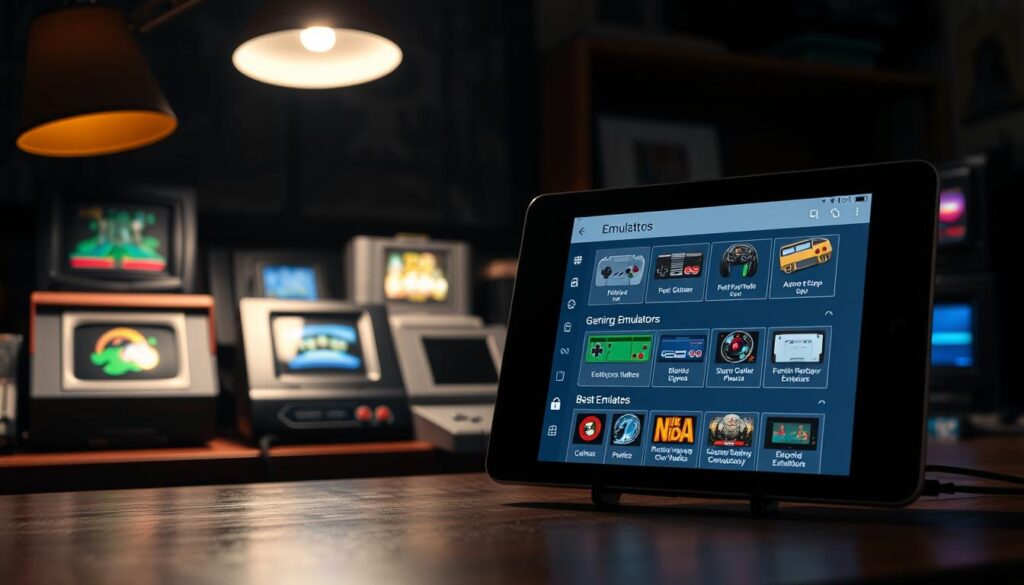
Find an emulator that fits your needs and works well with your device. Take your time to look at all your options. This will help you enjoy games that match your device’s capabilities.
Benefits of Using Emulators for Better Gaming Performance on Low-Resolution Phones
Emulators offer big advantages for those with low-resolution phones. They make gaming better by giving smoother gameplay and clearer graphics. This is something low-end devices often can’t do on their own.
These programs let you play a wider variety of games. Emulators can handle games that need more power, so you have more to choose from. You can also switch between games and other apps easily, without losing performance.
Emulators also make it easy to use social media and chat with friends while gaming. This lets you share your gaming moments and stay connected with friends. Using emulators really improves the gaming experience for those with low-resolution devices.
Factors to Consider When Selecting an Emulator
Choosing the right emulator requires careful thought. First, check if your device meets the system requirements. This ensures the emulator runs smoothly. It’s also important to see if the emulator works with different Android versions.
Performance features like graphics settings and control customization are key. They let you adjust the game to your liking. A simple installation process is crucial for user happiness.
Keep an eye on updates for the emulator. They help it work with new games and OS versions. Don’t forget about community support. Active forums and groups offer help and tips, making your choice easier. Remember to look at comparison factors to see how emulators stack up.
Top Lightweight Android Emulators for Low-End PCs
Choosing the right emulator for PC gaming on low-end systems can be tough. Luckily, many lightweight emulators shine with their great performance. Each one has special features for users with limited hardware.
MuMu Player is a favorite for its high FPS support. This makes games run smoothly on older devices. It also lets gamers adjust controls to fit their style.
Nox Player is another top pick. It has a simple interface and lots of features for better performance. It’s great for playing multiple games at once.
LDPlayer is known for being light and fast. It comes with tools for keyboard mapping and game optimization. This ensures a smooth gaming experience on less powerful PCs.
The table below compares these emulators. It shows their strengths and what you need to run them:
| Emulator | High FPS Support | Customizable Controls | System Requirements |
|---|---|---|---|
| MuMu Player | Yes | Yes | 2 GB RAM, 2 GHz CPU |
| Nox Player | Yes | Yes | 1.5 GB RAM, Dual-core CPU |
| LDPlayer | Yes | Yes | 2 GB RAM, Quad-core CPU |
These emulators are perfect for those who want great performance without expensive hardware. They make PC gaming fun and accessible.
Comparison of the Best Emulators
A detailed look at the top emulators shows which ones perform best on low-resolution devices. We compare BlueStacks, Genymotion, and MEmu Play. This helps gamers see which one fits their needs best.
| Emulator | User Ratings | RAM Requirement | Key Features | Specific Use Cases |
|---|---|---|---|---|
| BlueStacks | 4.5/5 | 2 GB minimum | Multi-instance, game optimization | General gaming with high compatibility |
| Genymotion | 4.0/5 | 1 GB minimum | Cloud-based options, custom configurations | App testing and development |
| MEmu Play | 4.2/5 | 2 GB minimum | Easy keyboard mapping, high-performance modes | Gaming with customization options |
This features evaluation gives a quick look at each emulator’s usability and efficiency. It helps gamers understand the key performance metrics for smooth gameplay. By looking at these attributes, users can find the best emulator for their gaming style.
Key Features to Look for in an Emulator
Choosing the right emulator is key for better gaming. Look for features that boost performance. These features help games run smoothly, even on older devices.
Hardware acceleration is a must. It uses your device’s GPU for better graphics. This makes games look sharper and more real.
Being able to adjust controls is also important. Everyone likes different controls. This lets you tailor your gaming experience to fit your style.
Lastly, the ability to run multiple games at once is great. It lets you switch between games without stopping. This makes gaming more fun and productive.
| Feature | Benefits |
|---|---|
| Hardware Acceleration | Improves graphics rendering for better visual quality. |
| High Graphics Support | Provides an immersive experience with rich visuals. |
| Customizable Controls | Enhances playability by allowing personal preferences. |
| Multiple Instance Capability | Increases productivity and flexibility in multitasking. |
These key features make gaming better, even on older devices. They improve your gaming experience and make it more fun.
The Role of Hardware Acceleration in Gaming Emulation
Hardware acceleration is key to better gaming and emulator performance. It uses the host system’s graphics processing unit (GPU) to improve graphics. This makes games run smoother, especially for games that need lots of graphics power.
Using hardware acceleration, emulators can offer faster frame rates and less lag. This means gamers can play for hours without annoying delays. Emulators like BlueStacks and NoxPlayer use this feature, making them popular with many users.
Hardware acceleration boosts both visual quality and system responsiveness. It’s especially helpful for those with lower-end devices. This technology ensures players enjoy their games more, making the experience better overall.
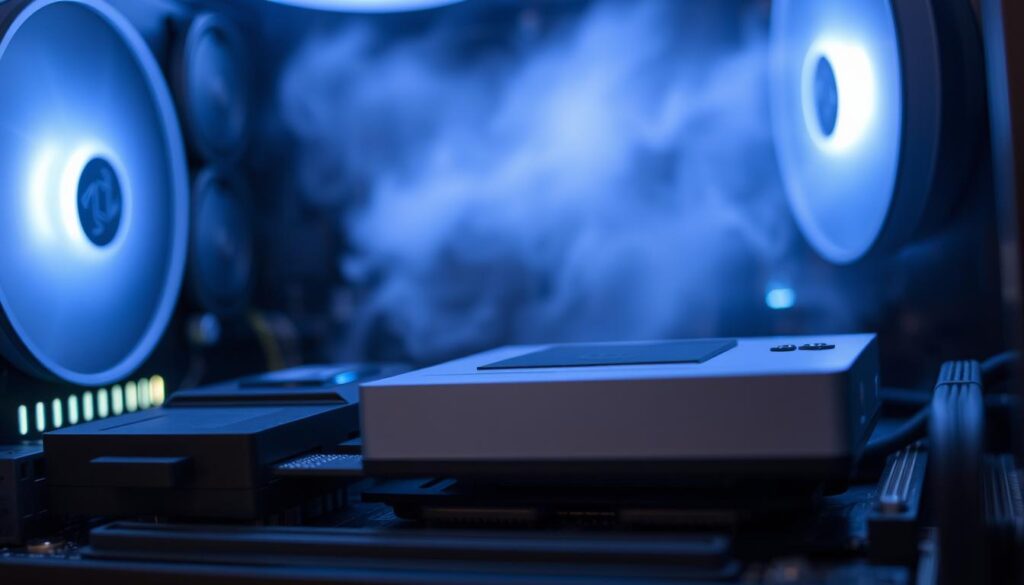
Testing and Optimizing Game Performance with Emulators
Testing game performance with emulators is key for the best gaming experience. Tweaking settings like RAM and CPU helps a lot. It makes games run smoother, even on older devices.
Choosing the right rendering engine can also boost performance. Emulators let you switch between OpenGL, DirectX, or software rendering. The right choice can make games look better and run faster.
Keeping an eye on performance metrics is important. Tracking frame rates, response times, and latency helps make adjustments. Here are some common ways to improve game performance:
| Optimization Technique | Description | Impact on Game Performance |
|---|---|---|
| RAM Allocation | Adjusting the amount of RAM dedicated to the emulator. | Can lead to smoother gameplay. |
| CPU Allocation | Configuring the number of CPU cores allocated to the emulator. | Improves processing speed and reduces lag. |
| Graphics Settings | Modifying resolution, texture quality, and other visual options. | Affects the overall graphics experience. |
| Rendering Engine | Choosing between OpenGL, DirectX, or software rendering. | Can drastically change frame rates and graphics fidelity. |
By using these techniques, you can see big improvements in how well emulators work. A well-optimized setup can make even tough games run well on older devices.
How to Install and Use an Emulator Effectively
Installing an emulator is easy. Just follow this guide for a smooth setup. First, download the emulator from a trusted site. BlueStacks, NoxPlayer, and MEmu are good choices. Make sure your system meets the emulator’s needs before you start.
Then, run the installer and follow the on-screen instructions. This part is crucial. After setup, open the emulator and tweak settings for better performance. Adjust graphics and RAM to get the most out of it.
When you run into problems, there are solutions. Check forums or the official support pages for help. They offer tips to fix common issues and improve your gaming.
Using external controllers can make games more fun. Many emulators support gamepads, perfect for action games. Plus, accessing the Google Play Store lets you download games right in the emulator. These tips will enhance your gaming on your device.
Conclusion
Choosing the right emulator can really boost gaming on low-resolution phones. Our review shows how emulators can make games more fun and smooth. This is great for those who want better gaming without spending a lot on new devices.
It’s important for users to try out different emulators to find the best fit. With so many options, you can pick one that works well for you and improves your gaming. This way, you can play more games and enjoy them better, even with older phones.
FAQ
What is the primary benefit of using an emulator for gaming on low-resolution devices?
Emulators make games look better and run smoother on devices that can’t handle demanding games. This is because they use the device’s power more efficiently.
Are emulators safe to use on my PC or Mac?
Yes, most emulators are safe if you get them from trusted places. Always check reviews and make sure the emulator is updated to avoid security problems.
How do I choose the best emulator for my specific gaming needs?
First, check your device’s specs. Then, see if the emulator fits your needs in terms of graphics and controls. This will help you pick the right one.
What are some popular lightweight Android emulators for low-end PCs?
MuMu Player, Nox Player, and LDPlayer are great for low-end PCs. They’re designed to run smoothly and offer cool features.
Do emulators support multitasking and running multiple apps simultaneously?
Yes, many emulators let you run multiple apps at once. This is great for playing games and chatting with friends at the same time.
How does hardware acceleration improve emulator performance?
Hardware acceleration uses your computer’s GPU to make games look better and run faster. This means smoother gameplay and higher frame rates.
What steps should I follow to install and configure an emulator?
Start by downloading the emulator from its official site. Then, follow the setup instructions. Make sure to adjust settings like RAM and CPU. Also, get access to the Google Play Store for apps.
Can I connect an external controller to an emulator for a better gaming experience?
Yes, many emulators work with external controllers. This can make your games feel more real and responsive.
How can I optimize game performance within an emulator?
To get the best performance, tweak settings for RAM and CPU. Try different rendering engines and keep an eye on performance metrics. This will help you find the best setup for your device.
Are there any drawbacks to using emulators for gaming?
Using emulators might lead to legal issues with some games. They can also cause lag if your device isn’t powerful enough. Plus, you’ll need to update the emulator regularly to keep it running well.


